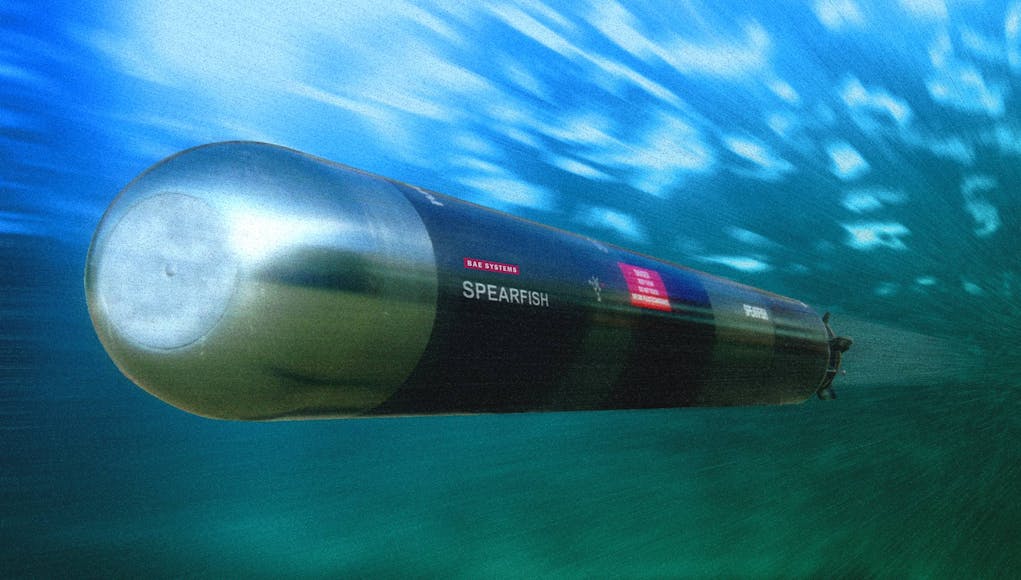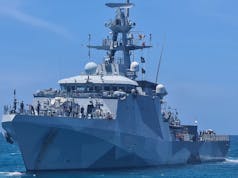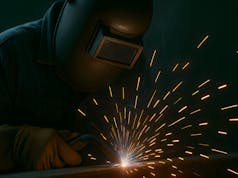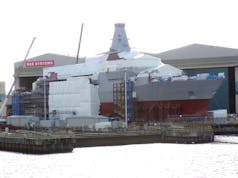Spearfish and Sting Ray torpedoes are receiving a £230 million maintenance uplift as part of a new contract, say the Ministry of Defence.
The Torpedoes Repair and Maintenance (TRAM) contract will run for six years.
TRAM supersedes the Torpedo Capability Contract (TCC) with BAE Systems which ran for 10 years.
Spearfish torpedoes – which use sonar to home in on targets – are carried by the Royal Navy’s Astute class and Trafalgar class hunter-killer submarines and the nuclear deterrent Vanguard class to neutralise underwater and surface threats. While Sting Ray torpedoes are deployed on Anti-Submarine Warfare mission, including frigates, Merlin and Wildcat helicopters.
Defence Minister Jeremy Quin said:
“Our Royal Navy submarines require sophisticated defensive and offensive underwater weapons to deter a wide range of surface and subsurface threats. This £230 million investment is crucial in safeguarding the availability and effectiveness of these highly capable weapon systems whilst supporting skilled British jobs.”
Dr Brooke Hoskins, Director of Products and Training Services for BAE Systems Maritime Services said:
“BAE Systems’ teams have developed, manufactured, and supported the UK’s torpedoes since the 1970s. Torpedoes have a vital role in layered anti-submarine warfare. We are incredibly proud to continue delivering these critical support services to the Royal Navy through a combination of our agile and innovative forward thinking and our heritage and expertise.”
According to a Ministry of Defence statement:
“The contract will help guarantee the Royal Navy’s inventory of Spearfish Heavyweight and Sting Ray Lightweight torpedoes. A full suite of maintenance activity is also included. This support ranges from technical repair, provision of spares, stock management, logistics and trials support.”














Powered by a gas turbine and pump jet propulsor. Everyone else’s torpedoes powered by electric motors and can reach 50 knots approximately while Spearfish closer to 70. That’s a smashing advantage but is there a price to pay? For example in slow speed stealth mode? Anybody out there know the answer to this?
Nope, not yet……. and hopefully we never will.
Thought that would be the answer… 🙂
I would assume spearfish has a wonder along mode too, just before it ruins your day.
It must be terrifying having a Spearfish steaming in at you at 70 knots!
Supercavitating torpedoes can go several times faster.
Yes but they have really short range and can only really hit a stationary target that’s why only nutters deploy them and complete nutters stick nuclear warheads on them ( nuclear war head + 4 mile range = complete nutter)
Yes, but they are short range, unguided weapons of last desperate resort. Like the Skval, designed by the Soviets during the cold war when they knew NATO subs could get close to them before they stood a chance of detecting their presence and would then fire a salvo of these things in the western sub’s general direction in the hope of getting there and causing mayhem before the good guy’s torpedo got to them.
General question… Can it even be considered ‘stealthy’ if it uses sonar to home in on its target?
M@
I’d assume when they say “sonar” Matt they mean both active & passive versions – passive sonar just listens for targets rather than pinging as active sonar does, so is completely stealthy.
Generally its wire guided in the general direction of the target and in passive sonar mode. They only go active sonar if decoys are deployed so they can “see” the golden target. If they still have target desertion in passive mode they stay passive.
if the sonar is Passive – yes!
Often it will be fired in passive mode along a bearing broadly in line with the targets position and being wire guided by the submarine. Once it closes to within a short distance of the target only then does it activate its active sonar leaving very little time to react
Yes. The idea is (at least used to be) that you fire your torpedo as quietly as possible and guide it via a fibre optic cable at slow speed to position it within the no-escape zone of the enemy sub. At the appropriate moment, and still (supposedly) undetected, you command the torpedo to go active, go to full speed and cut the wire.
Wouldn’t a gas turbine make more noise than electric motors?
Decoys if can mask a ship obviously can defeat it.
It has an active and passive sonar mode to help it hunt. Also the pump jet is relatively quiet. Tactics also come into play like closing to the target on the other side of a thermal layer thus reducing its noise. The thing is very smart and can alter its speed as required. It also has a re-attack mode if it misses the first time around.
The pump jet also increases maneuverability. Conventional torpedos have fins that act like a standard rudder. The speed of the torpedo determines the speed of the water over the control surface and hence rate of turn.
On Spearfish and Sting Ray the control surfaces act to direct the pump jet stream ( Thumb over a running tap is a good analogy) . the pump jet stream is a function of the engine speed …which makes the thing insanely maneuverable.
And yes both of them re attack . They have shaped charge warheads for punching through meters of titanium.double hull, ballast tanks, flank missile tubes (Oscar Class). The sonar and computer know where the weakest point on a subs hull is and ensure it attacks that point at the optimum angle for the shaped charge to do its job.
Not sure you’re quite right there re-the control surfaces directing the pump jet stream, at least from my memory. The control surfaces were in the water flow behind the rotor drive cowling. Pump jet exhaust was through a straight tube about 30cm long which fitted through the TMD. It was 1991 since I last worked on them with the Marconi Trials Team and have lost a few grey cells since then, so unless the 600 & 700 sections have changed radically since then I stand to be corrected.
When a torpedo or a sub go deep cavitation reduces anyway due to water pressure (although blade RPM is also a factor along with blade design).
Spearfish and Sting Ray where designed to kill titanium double hull ALFAs doing 40-50knts at well over 300m depth.
Modern day subs dont have the same performance as Soviet era ALFA’s so there is very little chance for most modern and inservice subs escaping them.
I think gun buster has left comments in the past about it capabilities. They definitly have a slow mod especially for tagerting convoys as they don’t want to attack from the direction they are launched or leave a trail of bubbles WW2 movie style. 70n must be for attacking other subs, striking fast and getting out of there.
Yes i know. My question was merely whether the quest for maximum speed has been achieved at the expense of a slightly more noisy torpedo at slow speed. That’s all. But as Capt PW has said, we shall never know…
Guess you haven’t heard about the Russkies’ VA-111 supercavitating torpedo capable of 200+ knots.
Wasn’t it 2000+ knots? I’m sure Putin said that. And I believe everything he says.
And wasn’t it the properly called “the super warp speed megatron gargle blaster“ that can only be launched from one of Russia’s new model aircraft carriers in full CGI mode?
Well the US developed a whole 6th Gen fighter under Trump so what’s a supersonic torpedo by comparison.
Does the 200kt capability come with a downside?
Yeah but that torpedo cant see through its own wake, its essentially dumbfire with a very short range (4 miles), the early versions couldnt even steer but the latest version can receive course correction information from the mothership. Soviet captains considered it a suicide weapon as they would be within the nuclear blast area and their sub would be destroyer along with the target, or even getting within range to use it would be suicide.
Nowadays the Russians use a non-nuclear version as a torpedo interceptor rather than an anti-ship weapon, they fire it along the course of the incoming torpedo and detonate it when its within range of the blast.
They started making those in the 60s, they are such special things only Iran has bothered to copy them.
They are what you call niche…..as no sane individual wants to use a very noisy here I am 4-10 mile ranged super fast thing that’s so inaccurate the Soviets tended to stick nuclear warheads on them. Nuclear hand grenade anyone ?
Short ranged and it has difficulty homing because it has , as the name suggests, supercavitation around the nose.A suppercavity bubble means sonar homing is useless.
Basically its the equivalent of shooting a rifle at a moving target, hoping the target doesnt move.
Oh yes I have. Very impressive but pretty useless under most circumstances
No issue. The Spearfish motor can go into a cruise mode to increase range at a slower speed
Yes I know Gunbuster. Thanks. My question was whether the quest for maximum speed renders it less stealthy at slow speeds when compared to similar electrically powered torpedoes. But as Capt PW said, I guess we shall never know.
I think we also need to ask ‘why gas powered’ when Britain should be leading the green revolution with e-torpedoes.
Both torpedoes will receive a super great new coat of paint! And FFBNW high explosive warhead….! Seriously however, good news, its not all about shiny new kit and numbers, its about ensuring the capabilty we have, in service, is kept at peak performance.
Pretty much any munition will need remanufacturing and recertifying after a couple of decades as components may have failed or the warheads explosive decomposed.
£250m for a service seems kinda pricey, was expecting some upgrades for that. I guess defense manufacturers can name their price as there is no real competition.
Excellent news.
Just the other month good old H was quoting Sputnik news that the latest variant of this capability was struggling.
Oh well.
Spearfish has two modes it operates in, ASW or ASuW, and has two speeds, slow (which is fast), and high speed (very fast). Unless conducting a counter fire drill, after launch the weapon is guided into its search area, where it does its own search until it either aquires the target, where it goes into high speed and homes in, or, the submarines takes control of it and redirects it. If it missrs it will automatically reattack the tgt. The SM can control the wrapon until the wire runs out. Hope this helps.
Wot Deep32 says…. while it wasn’t ‘my part of ship’, its a clever bit of gear. I seem to mind they could get it up to 90 odd knots but the internal ‘gubbings’ couldn’t recalculate quick enough so it got slowed to the 70 odd knots.
Was onboard when we did a Hulkex on HMS Brave (for clarity I was onboard the boat not the target) and while there was a slight delay it did break the spine of Brave. Saw the footage of a Sub Harpoon going into the hanger too, that was pretty messy, made extra ‘sweet’ because it was my skimmer mate’s first draft. Petty… moi….
Glad to hear you werent on Brave!!!???
I saw the sinkex video against Brave. She took a huge pounding.
If you get a heavyweight torpedo exploding below the keel of any ship it doesn’t matter how good your DC skills are its liferaft time.
Would really like to see Stingray integrated with our P8s. I would also like to see it paired up with an VL ASROC type launcher. So a ship still has anti-submarine capability, when the ship’s helicopter is unavailable.
DaveyB, I will be pedantic… You have to name it String Ray. The one word, no spaces Stingray is copyrighted to Gerry Anderson of the “Supermarionation” TV programme fame. No S**T, true Dit !
It must be integrated with P8. The Mk50 that the RAF has been forced to buy is basically the very old MK46 with a new homing head. It’s Slow, cannot go really deep and would struggle to damage most nuc boats… If it ever managed to catch them.
As to Asroc… It would be nice but Sting Ray is heavier than the MK46 even though Sting Ray doesn’t carry its own Otto Fuel, being powered by a sea water electrolyte battery. The extra weight would have an effect on launching and the range. Center of gravity is probably off as well. Its probably not worth the cost or effort.
I was thinking of a VL launched system with the range of the MBDA Milas. Milas should have no issues lobbing a “String Ray”.
Yes. All of the above. But it ain’t going to happen. Too expensive. To develop a flying kit for Stingray would be prohibitive. And to operate P8 down to the wave tops would negate the aircraft’s entire CONUSE I suspect. Now, putting one at the end of ASROC, now that might be possible. But also significantly expensive so i suspect the answer will be no again. Just buy ASROC as it is instead.
From memory, Nimrod could launch “String Ray” from 2500ft. As they found that at much lower levels, the sub could hear the Nimrod.
A P8 loaded up with Sting Ray torpedos (and potentially AShM’s) working with a network of sonar buoy and search radar equipped drones would be a hell of a combo.